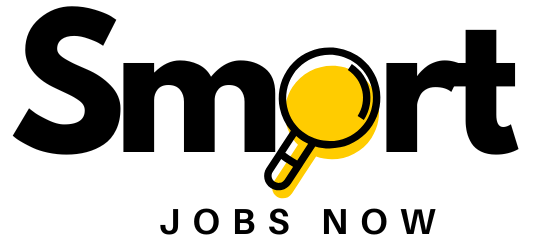In today’s fast-paced world, finding a balance between work and personal life can be challenging. ‘How to Achieve Work-Life Balance’ is more important than ever for personal well-being and productivity. Let’s explore practical tips and strategies that can help you navigate this delicate balance. Our journey starts with understanding what truly defines a healthy work-life balance.
Understanding Work-Life Balance
Finding the right balance between professional responsibilities and personal life can be challenging. Work-life balance is not simply a division of time between work and leisure. It’s an equilibrium that promotes mental well-being and productivity. Modern success hinges on understanding this balance.
In the contemporary world, work often extends beyond traditional office hours. Emails, meetings, and deadlines can blend into personal time, making disconnecting difficult. Recognizing this hybrid work environment is the first step to achieving work-life balance.
Understanding your priorities is crucial. Identify the tasks that hold the most value in your career and personal life. This knowledge allows you to allocate time and energy appropriately, ensuring no aspect is neglected.
An essential element is strong boundaries. Set clear limits on work hours, especially if working remotely. Ensure your workspace is distinct from personal spaces, which signals a clear division of work and home life.
Moreover, communication plays a pivotal role. Discuss workloads and flexibility with employers or colleagues to manage expectations effectively. Transparent communication can prevent possible work-life conflicts.
Regular self-assessment can help in understanding if your current work-life balance is skewed. Adjusting strategies as life changes occur ensures continued balance and contentment.
Practical Tips for Busy Professionals
Organize Your Day: Utilize a planner or a digital calendar to jot down your daily tasks. This helps in prioritizing what really matters. Check off tasks as you complete them to feel a sense of achievement.
Set Realistic Goals: Aim for achievable targets instead of overwhelming yourself with lofty goals. Use the SMART criteria—Specific, Measurable, Attainable, Relevant, Time-bound—to plan your tasks efficiently.
Embrace Delegation: Understand that you don’t have to do everything yourself. Delegating tasks can empower your colleagues or team members, boosting productivity for everyone involved.
Embrace Flexibility: While having a routine is crucial, being flexible allows you to adapt when unforeseen events occur. Flexibility helps in maintaining a balance without undue stress.
Take Breaks: Short breaks throughout your workday improve concentration and reduce fatigue. Use methods like the Pomodoro Technique for productive work and rest cycles.
Utilize Technology Wisely: Use apps that can help streamline work, like task managers and collaboration tools. However, ensure that they don’t lead to unnecessary distractions.
Create ‘No Work Zones’: Designate specific times and areas where work is off-limits to ensure clear boundaries between your professional and personal life.
Learn to Say No: Recognize your limits and communicate them clearly. Politely declining tasks that overburden you is essential to maintain balance.
Regularly Assess Your Balance: Periodically review your work-life balance approach. Keeping track of what works and what doesn’t helps in making necessary adjustments for improvement.
The Role of Technology
In our quest for work-life balance, technology serves as a double-edged sword. While it can blur the lines between personal and professional life, it also provides tools to help manage both effectively. By leveraging technology wisely, individuals can improve productivity and gain more personal time.
Using apps for time tracking and task management can help prioritize tasks effectively. This ensures that attention is given to work commitments without sacrificing time for family or personal pursuits. Such apps also assist in maintaining focus, reducing the time spent on non-essential tasks.
Furthermore, video conferencing tools enable remote work, allowing professionals to adapt their environments to suit personal needs better. However, it is crucial to use these tools in moderation to prevent communication overload and burnout. Establishing clear virtual office hours can provide a semblance of the boundaries traditionally defined by the physical workplace.
Embracing technology responsibly means creating a dedicated workspace at home powered by efficient tools and systems. The use of cloud services ensures accessibility and convenience while maintaining a clean separation between work and leisure spaces.
Notifications on personal devices can become overwhelming, leading to constant distractions. Configuring ‘Do Not Disturb’ settings during focused work times or personal activities aids in maintaining a balanced mental load.
Importantly, virtual collaboration and communication tools facilitate connecting with colleagues and managing tasks efficiently, thus sparing time for personal growth and hobbies. By making savvy choices concerning which technological resources to integrate into daily routines, the balance between work responsibilities and personal life can be maintained more effectively.
Setting Boundaries at Work and Home
Creating clear boundaries both at work and home is essential to maintain a healthy work-life balance. At work, setting boundaries means clearly communicating availability to colleagues and supervisors. Use tools like calendars to indicate your working hours, and be firm in sticking to them. Avoid checking work emails or messages during personal time, unless it’s an emergency.
At home, it’s important to establish personal time and space that isn’t interrupted by work obligations. Consider creating a specific area in your home dedicated to work tasks. This helps compartmentalize work activities from personal life. Relaying to family members when you’re at work and when you’re available for home activities can make a significant difference.
Define specific tasks or projects for specific times, and allow some flexibility for unforeseen circumstances. For example, if you’re working from home, make sure your workspace is separate from communal areas. This not only keeps distractions at bay but also keeps work from impeding into your personal life.
Encourage open discussions regarding boundaries with colleagues and family members so everyone respects your limits and roles.
Boundary setting is not just a personal task but involves cooperation from all parties involved.
By managing these boundaries consistently, achieving a sustainable work-life balance becomes more attainable.
The Importance of Self-Care
Self-care plays a pivotal role in achieving and maintaining a healthy work-life balance. It involves taking steps to ensure your physical, mental, and emotional well-being, which can lead to increased productivity and happiness in both personal and professional spheres.
Nurturing Your Mental Health
Recognizing mental health as a critical component of self-care is vital. Engaging in activities that reduce stress, such as meditation or yoga, can help alleviate pressure from daily work and home responsibilities. Regular breaks during the workday to practice mindfulness or simply disconnect can recharge your mental energies.
Physical Well-being
Exercising regularly and maintaining a healthy diet are essential. Incorporate routines that fit into your schedule, whether that’s a morning run or evening gym session. Proper nutrition fuels your body, enabling you to tackle tasks with vigor and spirit. Even short walks during lunch breaks can enhance your physical state and clear your mind.
Emotional Health
Building a support system through friends, family, or support groups can aid in maintaining emotional balance. Being able to express your feelings and navigate through emotions constructively is a part of self-care that contributes to a fulfilling life. Prioritize activities that bring joy and relaxation, be it cooking, reading, or pursuing a hobby.
By emphasizing self-care, individuals can cultivate a resilient framework necessary for navigating the demands of modern life. The integration of these practices allows for a more harmonious and sustainable work-life balance.





